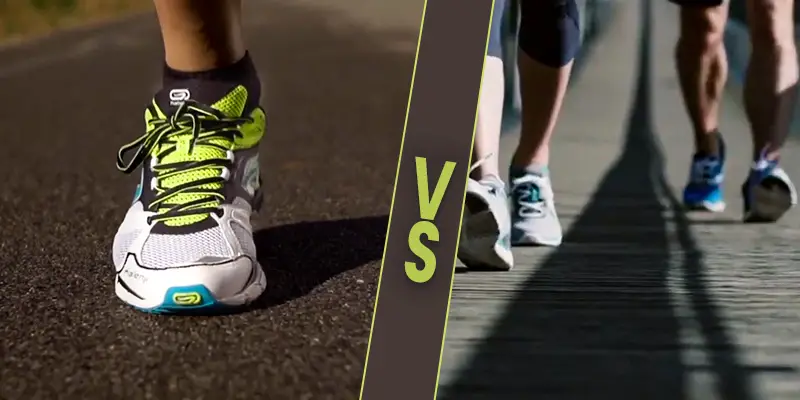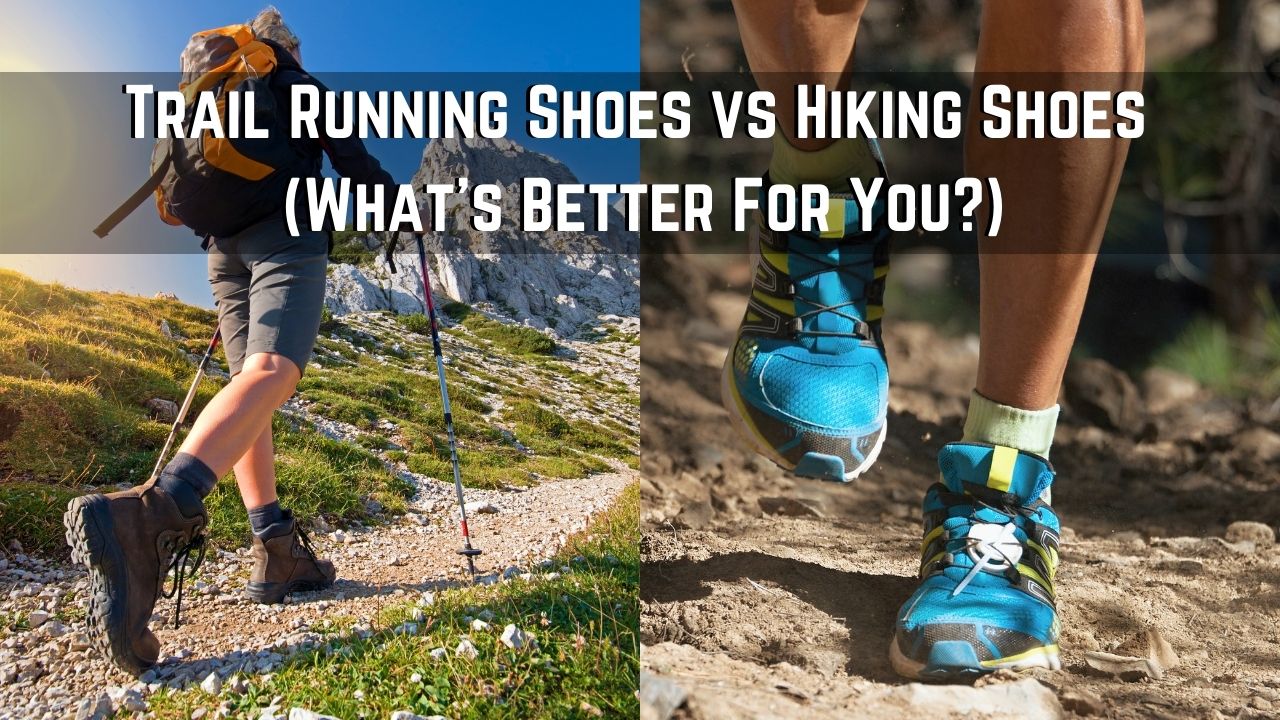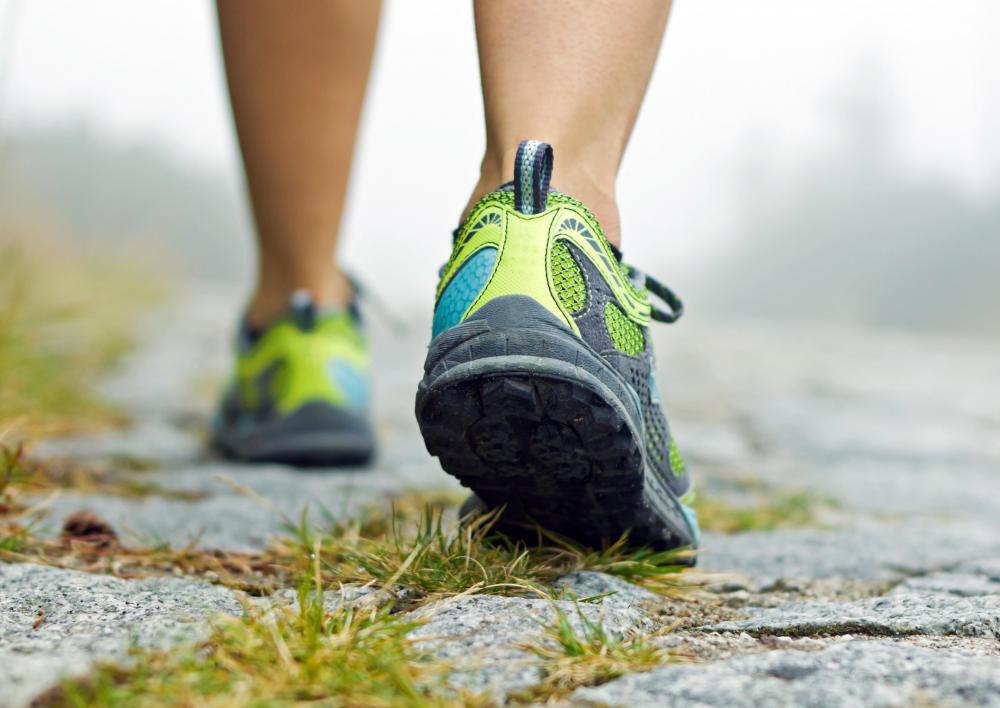Understanding the Differences: How Walking Shoes and Running Shoes Differ
When it comes to selecting the perfect footwear for your preferred activity, it’s essential to understand the differences between walking shoes and running shoes. While both types of shoes are designed to provide comfort and support, they cater to distinct biomechanical requirements. Walking shoes typically feature a more robust design, with increased cushioning in the heel area to accommodate the natural heel-to-toe motion of walking. These shoes also offer enhanced flexibility in the forefoot area, allowing for a more natural stride. For instance, the New Balance 990v5 walking shoes are known for their cushioned support and durability.
On the other hand, running shoes are designed to withstand the higher impact forces associated with running. They often have more cushioning in the midsole and forefoot areas, as well as improved stability features to accommodate the varied foot strike patterns of runners. A popular example is the ASICS Gel-Kayano 28 running shoes, which offer excellent cushioning and support for neutral to overpronated runners.
The Importance of Choosing the Right Footwear: Injury Prevention and Comfort
Selecting the appropriate footwear for walking or running is crucial for preventing injuries and ensuring comfort during your activities. Wearing the wrong shoes can lead to a range of issues, from blisters and foot pain to more severe problems such as shin splints, plantar fasciitis, or stress fractures. To determine the best shoe choice, it’s essential to assess your foot type and gait. There are three primary foot types: neutral, overpronated, and supinated. Neutral feet roll inward slightly during the gait cycle, while overpronated feet roll inward excessively, and supinated feet roll outward.
Gait analysis can help identify your foot type and determine the ideal shoe type for your needs. Some specialty running or athletic stores offer free gait analysis services, or you can consult a podiatrist for a professional assessment.
Once you’ve identified your foot type and gait, consider the following factors when selecting walking or running shoes:
- Cushioning: Look for shoes that provide adequate cushioning to absorb impact forces, especially in the midsole and forefoot areas.
- Support: Ensure the shoes offer sufficient support for your foot type, whether you need stability features for overpronation or motion control for supination.
- Flexibility: Choose shoes that provide the right level of flexibility for your preferred activity, allowing for a natural range of motion.
- Breathability: Opt for shoes that offer good ventilation to keep your feet dry and comfortable during your walks or runs.
- Cushioning: Look for walking shoes with adequate cushioning, especially in the heel and forefoot areas, to absorb impact forces and provide shock absorption. For instance, the HOKA ONE ONE Bondi 7 offers maximum cushioning and a smooth ride.
- Support: Ensure the shoes provide sufficient support for your foot type. For example, if you have overpronation, consider shoes with motion control or stability features, such as the Brooks Adrenaline GTS 22. For neutral feet, choose shoes with neutral support, like the ASICS Gel-Nimbus 24.
- Flexibility: Opt for walking shoes that offer the right level of flexibility, allowing for a natural range of motion. The New Balance 860v12, for example, provides a balance of stability and flexibility.
- Breathability: Choose walking shoes that offer good ventilation to keep your feet dry and comfortable during your walks. The Saucony Cohesion 13 is a popular option for its breathability and comfort.
- Fit and Comfort: Ensure a proper fit and comfortable feel, allowing for some wiggle room in the toe box. Consider trying on shoes in the late afternoon or evening when your feet are likely to be at their largest.
- Cushioning: Look for running shoes with adequate cushioning, especially in the midsole and forefoot areas, to absorb impact forces and provide shock absorption. For instance, the ASICS Gel-Nimbus 24 offers excellent cushioning and a soft ride.
- Support: Ensure the shoes provide sufficient support for your foot type. For example, if you have overpronation, consider shoes with motion control or stability features, such as the Brooks Adrenaline GTS 22. For neutral feet, choose shoes with neutral support, like the Saucony Ride 15.
- Stability: Stability features in running shoes help control excessive inward or outward foot motion during running. For instance, the New Balance 860v12 offers excellent stability and support.
- Breathability: Choose running shoes that offer good ventilation to keep your feet dry and comfortable during your runs. The Nike Air Zoom Pegasus 39 is a popular option for its breathability and comfort.
- Fit and Comfort: Ensure a proper fit and comfortable feel, allowing for some wiggle room in the toe box. Consider trying on shoes in the late afternoon or evening when your feet are likely to be at their largest.
How to Choose the Perfect Walking Shoes: Factors to Consider
Selecting the ideal walking shoes involves considering several factors to ensure a comfortable and safe walking experience. Here’s a comprehensive guide to help you make the right choice:
By considering these factors, you can find the perfect walking shoes to meet your needs and preferences, ultimately enhancing your walking experience and reducing the risk of injury and discomfort.
How to Choose the Perfect Running Shoes: Factors to Consider
Selecting the ideal running shoes involves considering several factors to ensure a comfortable and safe running experience. Here’s a comprehensive guide to help you make the right choice:
By considering these factors, you can find the perfect running shoes to meet your needs and preferences, ultimately enhancing your running experience and reducing the risk of injury and discomfort.
The Role of Cushioning: How it Affects Your Walking and Running Experience
Cushioning plays a crucial role in both walking and running shoes, but the specific requirements for each activity can differ. Here’s how cushioning affects your walking and running experience:
Walking Shoes
Walking shoes typically feature increased cushioning in the heel area to accommodate the natural heel-to-toe motion of walking. This cushioning helps absorb impact forces and provides shock absorption, reducing the risk of injury and discomfort. For example, the New Balance 990v5 walking shoes offer excellent cushioning and support.
Running Shoes
Running shoes often have more cushioning in the midsole and forefoot areas, as well as improved stability features, to accommodate the higher impact forces associated with running. Cushioning in running shoes helps absorb impact forces and provides shock absorption, reducing the risk of injury and discomfort. The ASICS Gel-Nimbus 24 running shoes offer generous cushioning and a soft ride, making them an excellent choice for runners seeking maximum comfort.
In both walking and running shoes, cushioning plays a vital role in ensuring comfort and reducing the risk of injury. When selecting shoes, consider your personal preferences, activity level, and the specific requirements of your chosen activity to find the perfect balance of cushioning for your needs.
The Role of Support: How it Affects Your Walking and Running Experience
Support is a critical factor in both walking and running shoes, as it helps maintain proper foot alignment and prevent injuries. Here’s how support affects your walking and running experience:
Walking Shoes
Walking shoes should provide adequate support for your foot type and gait. For individuals with neutral pronation, shoes with moderate support are suitable. For those with overpronation or supination, shoes with additional support or motion control features are recommended. For example, the Brooks Addiction Walker 2 shoes offer excellent support and stability for overpronators.
Running Shoes
Running shoes should also provide appropriate support based on your foot type and gait. Runners with neutral pronation can opt for shoes with neutral support, while those with overpronation or supination should consider shoes with stability or motion control features. The ASICS GT-2000 10 running shoes offer excellent support and stability for overpronators, while the Saucony Kinvara 13 shoes are a great option for neutral runners seeking lightweight support.
In both walking and running shoes, support plays a vital role in ensuring proper foot alignment and reducing the risk of injury. When selecting shoes, consider your personal preferences, activity level, and the specific requirements of your chosen activity to find the perfect balance of support for your needs.
The Role of Flexibility: How it Affects Your Walking and Running Experience
Flexibility is an essential factor in both walking and running shoes, as it allows your feet to move naturally during your activities. Here’s how flexibility affects your walking and running experience:
Walking Shoes
Walking shoes should offer a balance of flexibility and support, particularly in the forefoot area, to accommodate the natural heel-to-toe motion of walking. Flexible walking shoes can help reduce the risk of injury and discomfort. For example, the Clarks Wave Trek Sneaker provides excellent flexibility and cushioning, making it an ideal choice for walkers.
Running Shoes
Running shoes should offer flexibility in the forefoot area to accommodate the natural gait cycle during running. However, they should also provide enough stability and support in the midfoot and heel areas to prevent excessive motion. The New Balance Fresh Foam 1080v11 shoes offer a great balance of flexibility and support, making them suitable for runners seeking a flexible shoe.
In both walking and running shoes, flexibility plays a vital role in ensuring a natural range of motion and reducing the risk of injury. When selecting shoes, consider your personal preferences, activity level, and the specific requirements of your chosen activity to find the perfect balance of flexibility for your needs.
The Role of Breathability: How it Affects Your Walking and Running Experience
Breathability is a crucial factor in both walking and running shoes, as it helps maintain a comfortable foot environment during your activities. Here’s how breathability affects your walking and running experience:
Walking Shoes
Walking shoes should provide adequate breathability to keep your feet cool and dry during your walks. Look for shoes with mesh uppers or other breathable materials, such as the Ryka Devotion Plus 3 walking shoes, which offer excellent breathability and support.
Running Shoes
Running shoes should also prioritize breathability, as runners tend to produce more sweat during their activities. Breathable running shoes help prevent odors, blisters, and other discomforts. The Adidas Ultraboost 22 shoes, for example, feature a breathable Primeknit upper that adapts to your foot’s movement while keeping your feet cool and dry.
In both walking and running shoes, breathability plays a vital role in ensuring a comfortable foot environment and reducing the risk of discomfort and injury. When selecting shoes, consider your personal preferences, activity level, and the specific requirements of your chosen activity to find the perfect balance of breathability for your needs.









